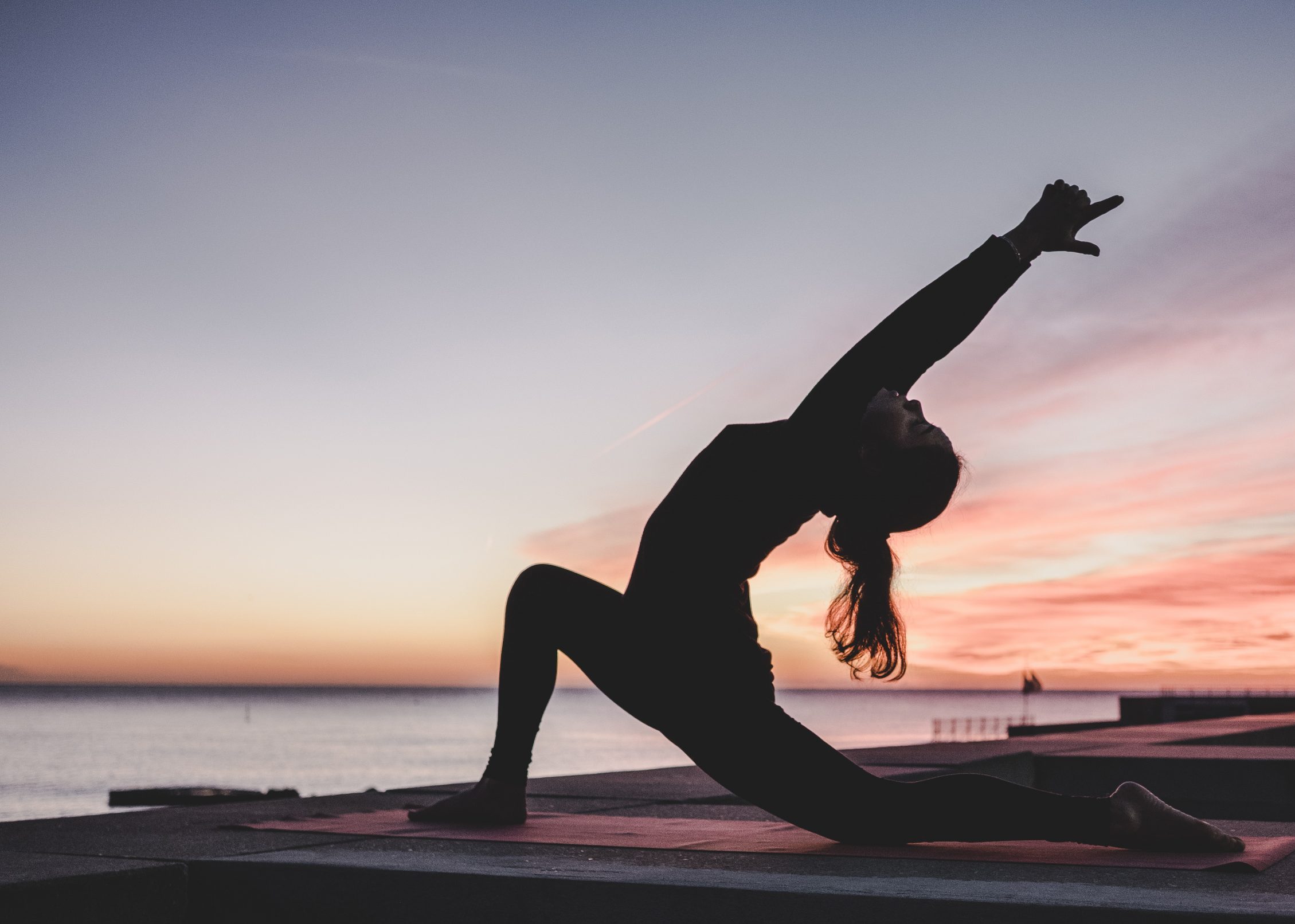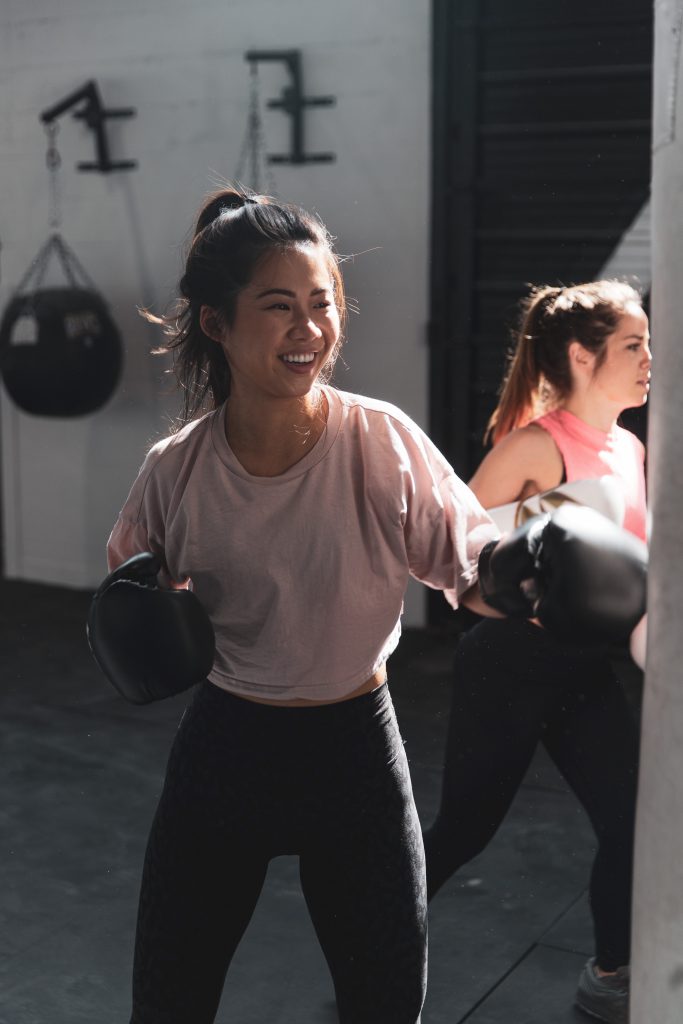
Relationship with exercise = relationship with self
by Dana Chapman, The Diet Recovery Coach
The word “exercise” is a loaded one that comes with a lot of emotional baggage. This is especially true when exercise is associated purely with weight loss efforts and goals. When you think you “should” exercise, a funny thing happens. You start to dread it, then you are far less likely to actually do it. Which is the opposite result of what you are going for. Today I want to show you another relationship with exercise, and a more freeing way to look at it.
Healthy exercise motivation, step-by-step
Here’s a step-by-step process to get you started on building (or rebuilding) a healthier relationship with exercise, movement and your body…Even if you have had a tumultuous relationship with it for years.
If you have a journal, what I’m about to share can unlock some more answers for you. If you don’t have a journal, simply put your own pen to paper as you read and explore the process, and elaborate on each of the steps yourself.
Examine your relationship with exercise
Step 1: Examine your underlying belief about self-punishment.
Is there a part of you that is seeking to punish yourself in some way? Exercise is a celebration of ways you can move your body, not a punishment for what you ate or for some other behavior in life. And it’s certainly not a punishment for you being you.
Very often my clients discover through our work together that there is something else that happened in their life that leaves them feeling guilty or like they need to punish themselves in some way.
Here’s the important thing to know: That “thing” is not always directly related to food or exercise, HOWEVER food and exercise is how guilt and punishment can present itself in your life. Be willing to see that your relationship to exercise is really about your relationship to yourself. ❤️
Step 2. Take inventory of your movements
Reflect on what types of exercise, workouts and activities involving movement you are doing solely for weight management, versus what you do for joy and the fun of it.
Your body hears everything your mind says and your body will not respond in a positive way if you are dreading and loathing every minute of that movement (or if you are doing it out of punishment as stated in Step 1, above). Making a list will help clear the cobwebs so you can more clearly see what you’re doing in black and white, and better understand the whys.
Step 3: Pull out 3-5 activities you do for the sheer joy or challenge of it
Look back at Step 2 for guidance here. If you don’t have anything written down in the sheer joy/challenge of it section of Step 2, then try to think of some things to add. If you are still coming up with a goose egg, get creative in how you think about it. Ie: You may not think of window shopping as exercise, but if your pedometer clocks you in at five miles at 2mph, that definitely counts. Bike rides with your kids? That counts. Gardening? Also counts.
Here are some of mine: Swinging on swings, rock hopping with my nieces, walking in nature, riding my bicycle when the weather is nice.
Step 4: Journaling exercise: Expand your horizons to what’s possible
This means considering what kind of exercises are available for every shape and sized body, not just what’s socially considered “exercise.”
Dancing, yoga, kickboxing, tennis, belly dancing, sports and games can be successful and beautiful and fun in all sized bodies. Remember, these activities do not have to look any particular way. Regardless of your body shape and limitations, everyone can dance, and everyone can do yoga. There’s no right or wrong way to do these activities.
Ask yourself: Am I scared of getting really good at a sport or activity (being in the spotlight) and is that why I am using my body weight as a reason to hold myself back? Could it be that I am really more scared of actually getting good at it? This is a very common underlying fear among the women I work with.
Step 5: Explore activities that have ZERO association with body weight or size.
There are oodles of things you can get involved in that do not involve body image.
In fact, there could be activities you do now that you are making the association on your own. (Another journaling opportunity!)
I have a client who’s gotten way into pickleball! I also was just a guest on the Girls Throw Too podcast about throwing cornhole. How fun is that?!
Jot down a quick list of activities that maybe you never considered before that could be exercise and fun at the same time.
Step 6: Have a supportive coach who is in a healthy relationship with food and exercise themselves.
You will never heal your relationship with these things if the one leading you is struggling themselves.
Let me take a moment and say that I’m glad we found each other!
Crushing the struggle to exercise
I am an open book with my community and my past struggles. Since I am now on the other side of it, I have a responsibility to women everywhere to be that trusted source to follow so that you have a chance of healing too. Getting good with exercise starts in the mind and in your belief system. When you can start changing that, the behaviors follow without trying so hard anymore. (aka no willpower!) and your body will love you for it.
It will be interesting to see what activities you do in the coming months that are for the pure joy and fun of it…. let’s see how positively your body responds.





 Exercise can bring joy and does not need to be a punishment. Image courtesy of Kike Yega
Exercise can bring joy and does not need to be a punishment. Image courtesy of Kike Yega  Exercise can bring joy and does not need to be a punishment. Image courtesy of Kike Yega
Exercise can bring joy and does not need to be a punishment. Image courtesy of Kike Yega